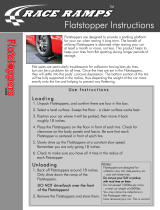
18 Safety
Safety belt pretensioners
The belts of the front seats are fitted with
automatic pretensioners and force limiters.
These are activated in the event of a severe
frontal or rear-end crash and a side-on colli-
sion, provided that the safety belts are being
worn.
The pretensioners serve to reduce the
forward movement of the body by tension-
ing the belt. The force limiters reduce belt
loads on the body by "loosening" the safety
belt to absorb the body’s kinetic energy as
gradually as possible.
The safety belt pretensioners are not acti-
vated by vehicle rollover.
Correct position for safety belt
• The lap portion of the belt should be
pulled as tightly as comfortable and as
low as possible across the hips, so that it
is just touching the top of the thighs. The
shoulder belt should be well in on the
shoulder but not touching the neck.
• Check to ensure that the belt is not twisted
or rubbing against any sharp edges.
• There should not be any slack in the belt.
Pull the belt tight – particularly important
when thick outer clothing is worn.
• Refrain from tilting the backrest more than
necessary, as the safety belt provides
better protection when the seat is in the
more upright position.
• Only one person per safety belt!
• For most of the time a safety belt is worn,
the retractor will allow the wearer freedom
of movement. The retractor locks up auto-
matically if the belt is jerked or withdrawn
sharply, the car tilts, the brakes are
applied hard or a crash occurs.
WARNING
If the car is involved in a crash, the safety
belts, belt pretensioners and other
components must be inspected by an
authorized Saab dealer and replaced as
necessary.
Never make any alterations or repairs to
the safety belt yourself. Visit an autho-
rized Saab dealer for any necessary
repairs.
WARNING
Proper positioning of the safety belt is
extremely important. An out of position
safety belt can result in the wearer sliding
underneath the belt in a crash (submarin-
ing) and injury can result from the lap
portion cutting into the abdomen.
WARNING
If two people share a belt, they risk injury
by being crushed together in the event of
a crash.
IB410
Correctly positioned safety belt





















